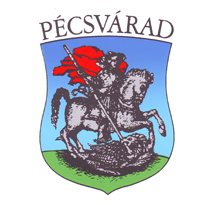Hospital
Since ancient Christian times, this kind of institution has been a type of place that is maintained for the support of those deserving (strangers, pilgrims, sick or poor people), in the name of hospitality. Normally, people in need for caring were housed in a single hall. From the 18th-19th century, the hospitals of earlier times continued to exist in different forms: some were institutions for healing and other for various charity functions.
The Benedictine Abbey of Pécsvárad was founded by King Saint Stephen in 1015, meaning that this was one of the first Benedictine abbeys. Because here monks had been practising healing since the beginnings, the place is known as the cradle of Hungarian medicine and pharmaceutics. Activities of the hospital grew more pronounced later on, and it is reported to have started working again only three years after the monastery had burned out during the conflagration in 1158. Nursing personnel, bath cure, herbs infused in bathtub water – these are all thought to have belonged to the therapy in Pécsvárad.
The hospital of the Pécsvárad Castle is now brought to life again with the help of a grant project: as part of reviving and reinterpreting traditions, several interesting features and sights are created:
Interactive space presenting Benedictine life and activities
This space is a modern display area with the addition of an interactive corner educating about herbs. An audiovisual system is installed using which visitor groups can learn about how Medieval monks spent their lives and what their everyday chores were. Unique seating furniture, arranged in a horseshoe shape, will be available for those coming in, with a flat LCD monitor on the opposite wall showing a film about the short history of the Pécsvárad Benedictine monastery, the life of Benedictine monks, their relationship with the surrounding communities and agriculture, as well as their special activities performed in the monastery (codex copying, medicinal work, nursing, etc.). The interactive corner allows interested visitors to take a closer look at certain herbs or even prepare certain mixture types based on authentic recipes – of either the pulverised or the ointment type. The walls of this room are decorated with etching reproductions from the era, showing medicinal activities of the Benedictines, in the neighbourhood of objects used for pulverising, mixing and measuring herbal preparations and infusions.
Benedictine room for herb teas and infusion making
Located in the lower level of the canon tower, this room offers the possibility to taste the teas and herb mixtures prepared in the interactive room, and to make smaller amounts of other types of infusions. In the meantime visitors can relax on the benches and chairs arranged in a semi-circle, or can try preparing herb teas, one of the everyday duties of Benedictine monks, on the tables in front of them. The walls are decorated with herbs collected from the herb garden in the castle courtyard, along with collecting tools (e.g. sickle, basket), contributing to the unique atmosphere of the place.
Room presenting Benedictine medicinal practice
Aroma massage, herbs, foot baths, etc. – among the types of curing practised in the era, Benedictine monks preferred various types of masks and covering. This normally meant that the patient's whole body or parts of it were wrapped in cold or warm linen soaked in herbal infusions. This was one of the preferred ways of applying the healing substances, as well as massaging.
This room is to illustrate such healing activities performed by Benedictines. In one of the compartments the cold-warm foot bath, another popular method, is shown in an authentic wooden tub; herb infusions play a role in this setting too, as they were used in foot baths as well, for various purposes.
Room of fragrance, salt room
The smallest part of the display area accommodates a room of fragrance and a salt room. At the times of Benedictine monks, such rooms were used for inhaling various volatile oils, and for healing respiratory diseases like allergy or lung asthma.
Furnished with purpose-built, authentic seating furniture, the fragrance room can have high concentrations of essential oils in its atmosphere by means of active evaporation. Presentations in this room are for 4-5 visitors at a time, during which they can try certain fragrances on themselves. The salt room has a salt-saturated twig wall, along with salt blocks and salt-evaporating dishes, all contributing to a high concentration of salt in the air.
Such treatments in the Benedictine times were used mostly for curing chronic respiratory diseases. Today, these are also applied in cases of allergic rhinitis, conjunctivitis and asthma, all of which are quite widespread nowadays. It is useful to educate about such ways of healing, now categorised as naturopathic medicine, as they can contribute to disease prevention. Apart from presentations, these treatments are available for visitors to be tried in their leisure time, as well as for tired pilgrims relaxing in the Castle Hotel.
Map
7720 Pécsvárad, Vár u. 45.
Phone: +36 72 671 235
Mobile: +36 30 387 8435
E-mail: info@pecsvaradivar.hu
Guestbook
Next